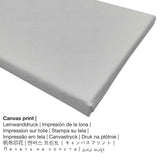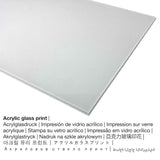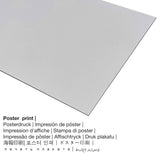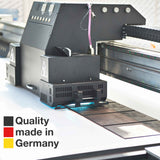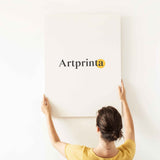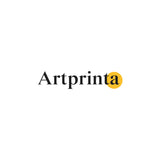Perugino, 1505 - Kraịst na nwanyị Sameria - ọmarịcha nka
Ụtụ gụnyere. Mbupu gbakọrọ na ndenye ọpụpụ.
Nbipụta nka mara mma nke onwe gị
In 1505 Perugino made this artwork. The 510 afọ ụdị nke masterpiece tụrụ nha - 27,3 x 46,3 cm (10 3/4 x 18 1/4 na) and was painted with the techinque of tempera on panel, transferred to canvas. This artpiece can be viewed in in the Ụlọ ọrụ Art nke Chicago art collection, which is one of the world’s great art museums, housing a collection that spans centuries and the globe. With courtesy of - Art Institute Chicago (license: public domain). Additionally, the artwork has the following creditline: Mr. na Oriakụ Martin A. Ryerson mkpokọta. Ọzọkwa, nhazi nke mmepụta dijitalụ dị n'ime odida obodo format na oke nke 16: 9, nke pụtara na ogologo bụ 78% ogologo karịa obosara.
Nhọrọ ihe dị
Maka mbipụta nka ọ bụla anyị na-enye ihe dị iche iche dị iche iche na nha. Nhọrọ ndị a dị maka n'otu n'otu:
- Mbipụta kwaaji: The canvas print is a printed canvas mounted on a wooden frame. The great advantage of canvas prints is that they are relatively low in weight, which means that it is easy and straightforward to hang the Canvas print without the help of additional wall-mounts. Canvas prints are suited for all kinds of walls.
- Glass acrylic e biri ebi (nwere ezigbo mkpuchi iko): A glossy acrylic glass print, which is sometimes labelled as a print on plexiglass, makes the original artwork into marvellous décor and makes a good alternative to canvas or aluminium dibond art prints. The artwork will be made with modern UV direct printing machines. The plexiglass protects your selected fine art print against light and external influences for decades.
- Mbipụta nke aluminom: Aluminium Dibond prints are metal prints with an outstanding depth - for a modern look and non-reflective surface structure. For our Aluminium Dibond option, we print your chosen artpiece on the aluminium white-primed surface. Colors are luminous in the highest definition, the details of the print are clear and crisp.
- Mpempe akwụkwọ mmado ebipụtara na akwa akwa: A poster print is a printed canvas with a nice surface texture. The printed poster is excellently suited for placing the fine art print in a special frame. Please keep in mind, that depending on the absolute size of the poster we add a white margin of approximately 2-6 cm round about the painting in order to facilitate the framing with your custom frame.
Ederede iwu: We try whatever we can in order to describe our products as exact as possible and to exhibit them visually. Still, the pigments of the printed materials, as well as the imprint may vary to a certain extent from the presentation on the screen. Depending on your settings of your screen and the nature of the surface, colors can unfortunately not be printed as realistically as the digital version on this website. Because the are processed and printed by hand, there might as well be minor variations in the exact position and the size of the motif.
Tebụl ngwaahịa
| Nkewa edemede: | ezi nka mmeputakwa |
| Usoro mmeghari: | dijitalụ mmeputakwa |
| Usoro mmepụta: | UV kpọmkwem obibi |
| Nlụpụta: | arụpụtara na Germany |
| Ụdị ngwaahịa: | a na-achọ |
| Eji ngwaahịa emebere: | mgbidi mgbidi, nka mgbidi |
| Ntuziaka onyonyo: | nhazi odida obodo |
| Oke akụkụ onyonyo: | 16: 9 |
| Mmetụta ihe onyonyo: | ogologo bụ 78% ogologo karịa obosara |
| Nhọrọ akwa: | Mpempe akwụkwọ, akwụkwọ mmado (akwụkwọ akpa), mbipụta enyo acrylic (nwere ezigbo mkpuchi iko), mbipụta ọla (aluminium dibbond) |
| Nhọrọ nke akwa akwa n'elu etiti ihe ndọtị (mbipụta akwa akwa): | 90x50cm - 35x20", 180x100cm - 71x39" |
| Acrylic glass print (nwere ezigbo mkpuchi iko) nhọrọ: | 90x50cm - 35x20", 180x100cm - 71x39" |
| Ụdị akwụkwọ mmado (akwụkwọ kwaaji) dị iche iche: | 90x50cm - 35x20" |
| Ụdị mbipụta aluminom dibond: | 90x50cm - 35x20" |
| Igwe onyonyo: | adịghị |
Nkọwapụta nka
| Aha nke ọrụ nka: | "Kraịst na Nwanyị Sameria" |
| Nhazi nka nka: | sere |
| Category: | nka ochie |
| oge: | 16th narị afọ |
| Emepụtara n'afọ: | 1505 |
| Afọ nka: | 510 afọ |
| Agba na: | tempera on panel, transferred to canvas |
| Nha nke ihe osise izizi: | 27,3 x 46,3 cm (10 3/4 x 18 1/4 na) |
| Egosiputara na: | Ụlọ ọrụ Art Chicago |
| Ebe ngosi nka: | Chicago, Illinois, Njikota Obodo Amerika |
| Ibe weebụ: | Ụlọ ọrụ Art Chicago |
| Akwụkwọ ikike nka: | ngalaba ọha |
| Site n'aka: | Ụlọ ọrụ Art Chicago |
| Ebe E Si Nweta: | Mr. na Oriakụ Martin A. Ryerson mkpokọta |
Banyere onye na-ese ihe
| Aha onye nka: | Perugino |
| okike nke onye nka: | nwoke |
| Nationality: | Italian |
| Ọrụ: | onye na-ese ihe |
| Country: | Italy |
| Nkewa onye nka: | nna ukwu ochie |
| Nwụrụ anwụ: | 78 afọ |
| Afọ amụrụ: | 1445 |
| Nwụrụ n'afọ: | 1523 |
Edobere ederede a site na nwebisiinka © , Artprinta.com (Artprinta)
Nkọwapụta nka sitere na Art Institute Chicago (© Nwebiisinka - Art Institute Chicago - Ụlọ ọrụ Art Chicago)
Perugino’s serene and decorous art was widely influential in his native region of Umbria and beyond, most famously through his contact with the young Raphael. These four panels, together with another one depicting the Resurrection, now at the Metropolitan Museum of Art, New York, once constituted a predella—a series of small pictures, often with narrative content, forming the base of an altarpiece. In this case, the painting that was positioned above the predella as the focal point of the altarpiece is unidentified. The predella scenes depict moments when Christ’s special nature was revealed: his birth, his baptism by Saint John the Baptist in the river Jordan, his conversation with a woman of Samaria at the well of the patriarch Jacob, the Resurrection, and his appearance to Mary Magdalene after the Resurrection.


